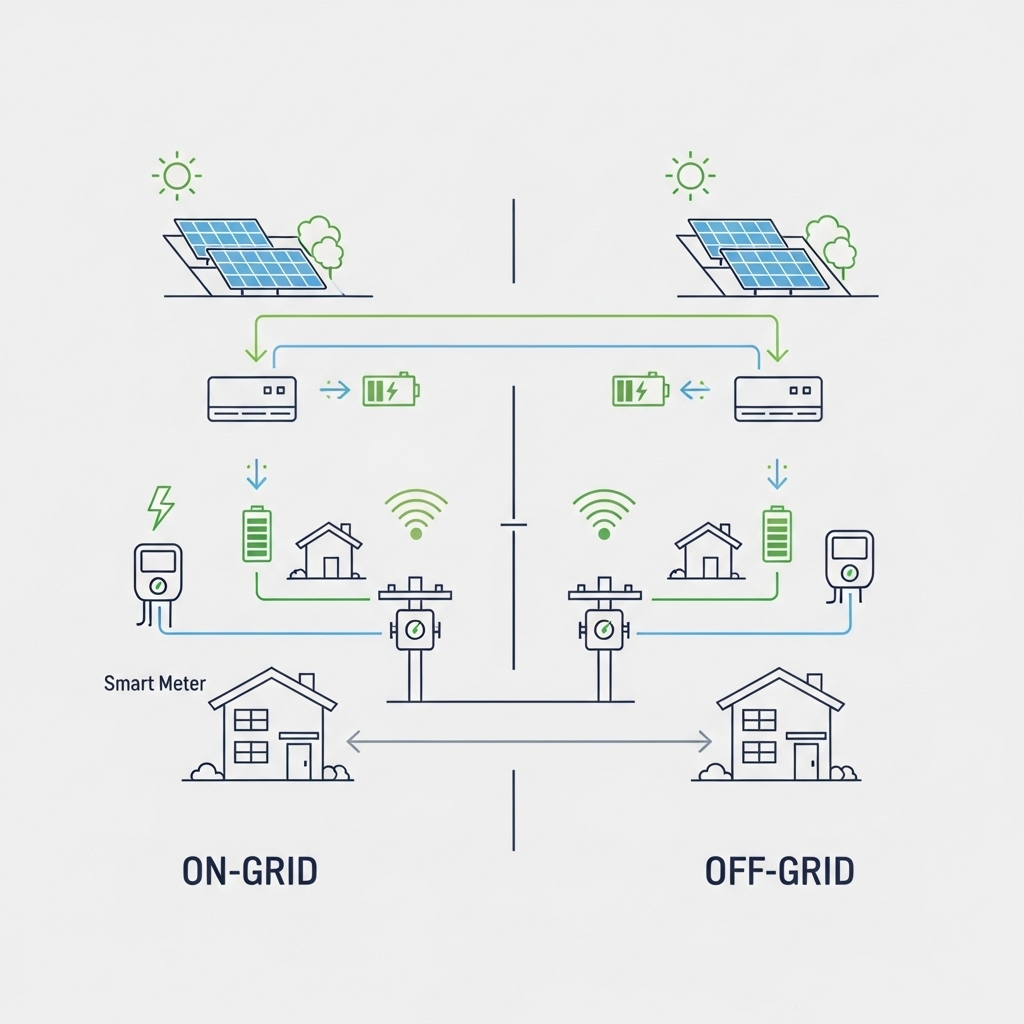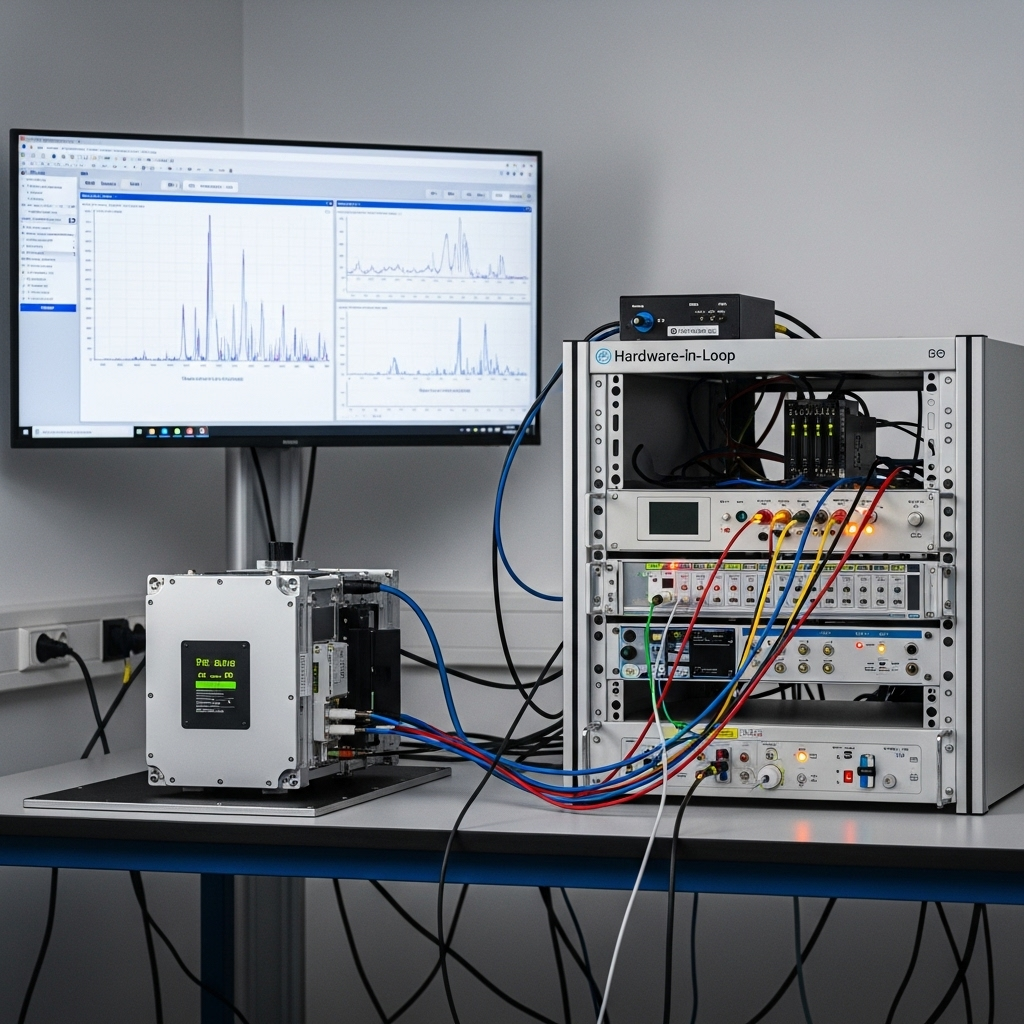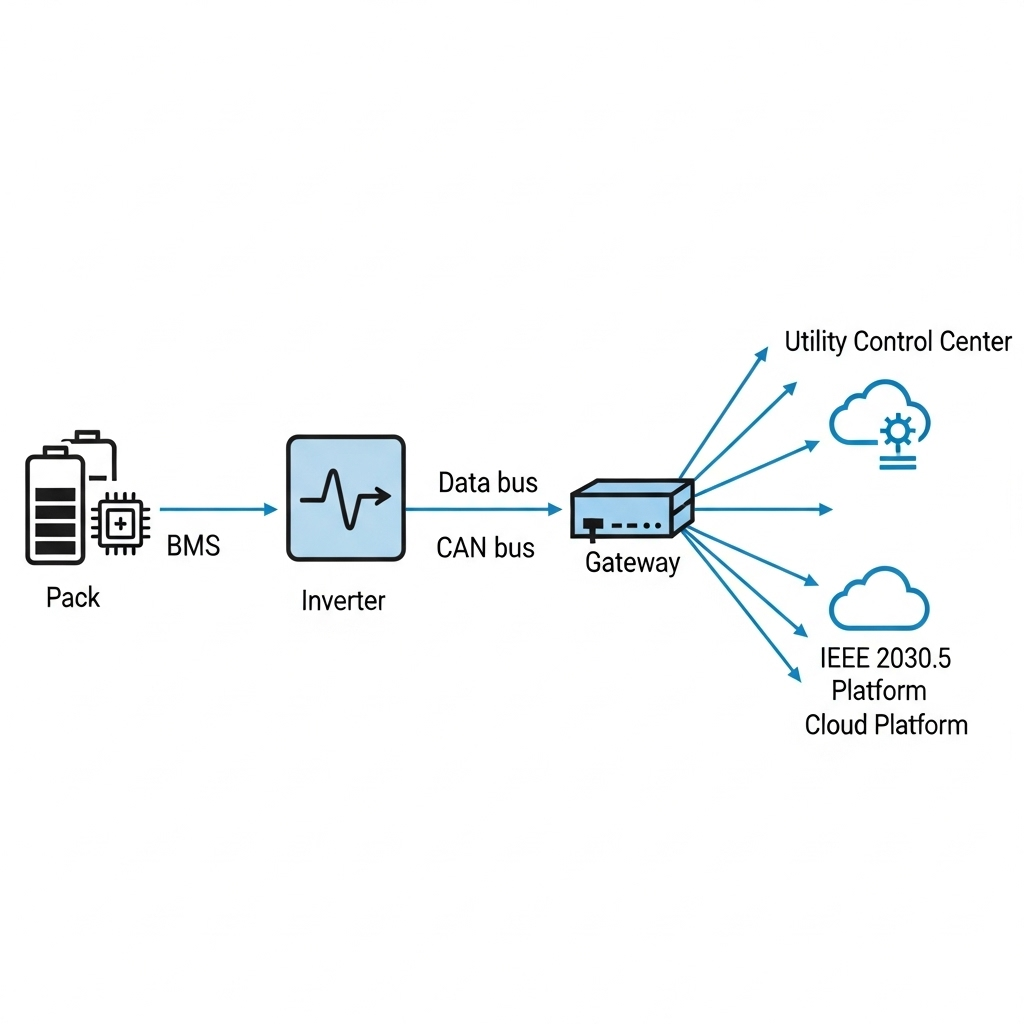As Distributed Energy Resources (DERs) like solar panels and battery storage become more common, the need for them to communicate effectively with the power grid is paramount. Two key communication protocols often mentioned are DNP3 and IEEE 2030.5. While both are listed in critical standards like IEEE 1547, they serve very different functions. This Q&A breaks down their distinct roles, helping you understand how they contribute to a modern, reliable energy network.
Understanding the Foundation: DER Communication Mandates
The conversation about DNP3 and IEEE 2030.5 begins with the standards that govern how DERs connect to the grid. Without these rules, integrating thousands of distributed assets would be chaotic and potentially unsafe.
The Role of IEEE 1547-2018
The IEEE 1547-2018 standard is the foundational document for DER interconnection in North America. It establishes the technical requirements for DERs to ensure they support grid stability. A key part of this standard is communication. According to a report on Grid Codes for Renewable Powered Systems by IRENA, IEEE 1547-2018 specifies that DERs must implement at least one of three protocols: DNP3 (IEEE 1815), IEEE 2030.5, or SunSpec Modbus. This requirement ensures that utilities can monitor and manage DERs effectively.
Why Standardized Protocols Are Crucial
Standardized protocols create a common language for devices from different manufacturers. This interoperability is vital for grid operators who need to manage a diverse fleet of assets. It allows for seamless data exchange, remote control, and enhanced cybersecurity. As the IEA's Renewables 2024 report highlights, the unprecedented expansion of variable renewable energy (VRE) sources necessitates robust control and communication to manage grid fluctuations and prevent issues like curtailment. Without standards, utilities would face a fragmented landscape of proprietary systems, increasing costs and complexity.
DNP3: The Utility's Workhorse for SCADA
Distributed Network Protocol 3 (DNP3) has been a cornerstone of the utility industry for decades. Its design reflects a focus on reliability and control for critical infrastructure.
What is DNP3?
DNP3 is a protocol primarily used in Supervisory Control and Data Acquisition (SCADA) systems. Think of it as the language utilities use for direct, real-time communication with remote equipment like substations and power line controllers. It operates on a master-slave model, where a central master (the utility's control center) sends commands to and requests data from remote slave devices (the DERs). It was originally designed for serial connections but has been adapted to run over modern IP networks.
DNP3's Role in DER Management
In the context of DERs, DNP3 is the protocol for direct command and control. When a utility needs to send a specific, immediate instruction—such as 'reduce output by 20%' or 'disconnect from the grid'—DNP3 is often the tool for the job. It provides a direct, secure line of communication from the utility's operations center to a DER or an aggregation of DERs. Its strength lies in its robustness and its ability to handle polling for specific data points in a highly structured manner. It is built for operational control, not for broad information dissemination.
IEEE 2030.5: The Internet Protocol for the Modern Grid
If DNP3 is the established workhorse, IEEE 2030.5 is the modern, internet-native protocol designed for the complexity of a distributed energy future. It handles a different type of communication entirely.
What is IEEE 2030.5?
IEEE 2030.5, originally known as Smart Energy Profile 2.0 (SEP2), is an application-layer protocol that uses standard internet technologies like TCP/IP, HTTP, and XML. Instead of a master-slave model, it uses a client-server architecture, similar to how your web browser interacts with a website. This design makes it highly scalable and flexible. A key feature is its built-in security, which uses Transport Layer Security (TLS) and Public Key Infrastructure (PKI) to encrypt communications and authenticate devices, aligning with modern 'zero trust' security models as praised by the U.S. Department of Energy.
IEEE 2030.5's Role in DER Ecosystems
IEEE 2030.5 is not for direct, real-time SCADA commands. Instead, it excels at exchanging rich sets of information between multiple parties. Its purpose is to facilitate grid services and market participation. For example, a utility can use IEEE 2030.5 to send pricing signals, announce a demand response event, or publish updated grid support functions to thousands or even millions of DERs simultaneously. It enables a sophisticated, message-based conversation between utilities, aggregators, and end-devices, forming the backbone for programs like California's Rule 21.
Head-to-Head Comparison: DNP3 vs. IEEE 2030.5
To clarify their differences, here is a direct comparison of their key attributes.
| Attribute | DNP3 | IEEE 2030.5 |
|---|---|---|
| Primary Use Case | Direct SCADA control and monitoring | Grid services, information exchange, market participation |
| Underlying Technology | Serial, TCP/IP | Web Services (HTTP/XML over TCP/IP) |
| Communication Model | Master-Slave | Client-Server |
| Security | Add-on security module (DNP3-SA) | Built-in, modern web security (TLS, PKI) |
| Data Model | Object-based (points, counters, etc.) | Function Set-based (messaging, pricing, demand response) |
| Scalability | Good for hundreds of controlled points | Designed for millions of endpoints |
Practical Application: When to Use Which Protocol
Understanding the technical differences is one thing; knowing when to apply them is another. The choice depends entirely on the application's goal.
Scenarios Favoring DNP3
DNP3 is the logical choice when a utility needs to integrate DERs into its existing SCADA system. It is ideal for direct, reliable control of a single large asset (like a utility-scale solar farm) or a small group of aggregated assets where the primary need is operational command, such as emergency shutdowns or voltage regulation. Legacy systems often rely on DNP3, making it a practical choice for backward compatibility.
Scenarios Favoring IEEE 2030.5
IEEE 2030.5 is essential for implementing advanced grid services. If you are developing a system for a demand response program, virtual power plant (VPP), or dynamic rate tariff, this is the protocol to use. Its ability to securely manage communication across a vast network of devices from different owners makes it perfect for large-scale residential and commercial DER aggregation.
Can They Coexist?
Yes, and they often do. The protocols are not mutually exclusive; they operate at different levels. A DER aggregator might use IEEE 2030.5 to receive a demand response signal from the utility. The aggregator's platform then translates that signal into specific commands sent to individual DERs using protocols like DNP3 or SunSpec Modbus. This architecture leverages the strengths of each protocol. In such complex systems, tracking system behavior is critical. Understanding the ultimate reference for solar and storage performance metrics helps ensure your assets respond as expected within these sophisticated communication frameworks.
Putting It All Together
The roles of DNP3 and IEEE 2030.5 are distinct and complementary. DNP3 is the tool for direct, operational *control*, providing a robust and reliable link for SCADA systems. IEEE 2030.5 is the protocol for large-scale *information exchange*, enabling the complex conversations required for modern grid services and DER market participation. As the energy grid evolves, both will play a crucial part in creating a flexible, resilient, and intelligent power network.
Frequently Asked Questions
Is one protocol better than the other?
Neither protocol is inherently 'better'. They are designed for different jobs. DNP3 is superior for direct, low-latency SCADA control, while IEEE 2030.5 is superior for scalable, secure information exchange among many parties. The best choice depends on the specific communication task.
Do I need to support both DNP3 and IEEE 2030.5 for my DER product?
Not necessarily. IEEE 1547-2018 requires support for at least one of the three specified protocols (DNP3, IEEE 2030.5, or SunSpec Modbus). The decision on which protocol(s) to implement should be based on your target market and the requirements of the utilities operating in that region.
How does SunSpec Modbus fit into this picture?
SunSpec Modbus is typically used for local communication, often called 'behind the meter'. For example, it facilitates communication between a solar inverter and a battery system within a home. DNP3 and IEEE 2030.5 are generally used for communication over a wide area network (WAN) between the DER system and the utility or an aggregator.
What are the security implications of these protocols?
IEEE 2030.5 was designed with modern cybersecurity in mind, incorporating end-to-end encryption and certificate-based authentication from the ground up. DNP3 can be secured using an extension called DNP3 Secure Authentication (DNP3-SA), but this is an add-on to the original protocol. The built-in security of IEEE 2030.5 is often seen as a significant advantage for deployments over public networks.
Disclaimer: This article provides general information and is not a substitute for professional engineering or legal advice regarding specific compliance requirements. Always consult with local utility standards and qualified experts.





Leave a comment
All comments are moderated before being published.
This site is protected by hCaptcha and the hCaptcha Privacy Policy and Terms of Service apply.